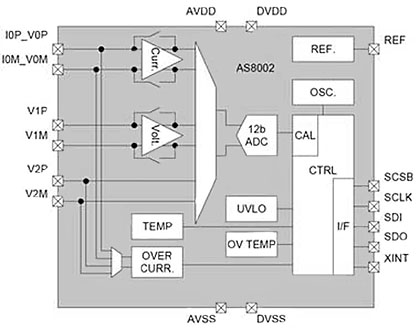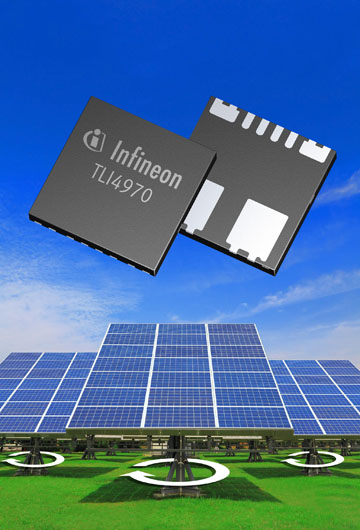The monitoring of current and power is more important than ever. Industrial automation, instrumentation, solar power conversion, battery monitoring, and medical measurement systems measure and log current draw for control or for system health feedback and performance evaluation. High-speed current monitoring is becoming more important as the measurement is more often being used in a feedback control loop or as an emergency shutdown control.
Current sense resistors have improved a lot in the past few years with lower resistance values for less power loss, and with tighter tolerance and better temperature stability. Analog ICs have also stepped up to the challenge of more accurate measurements that don’t take much power. I’ve chosen four current sense ICs that are a good example of what you can find today for your design.
Texas Instruments
TI offers the now world-famous INA250 — famous because we gave it a Product of the Year Award in January of this year. This device has a precision amp combined with a 0.002-Ω sense resistor in a TSSOP16 package. It can measure currents up to ±10 A at up to 35 V. You can see our previous coverage here: http://goo.gl/WqgkJd.

TI makes other current sense devices; in fact, they make them with an analog, digital, or comparator output (for simple protection applications). The analog output devices have a bandwidth of 4 kHz to 4.4 MHz. The INA169 is a good example. It’s a unipolar device with a small-signal bandwidth of 4.4 MHz and its common-mode range is 2.7 to 60 V. Input offset voltage is 2.0 mV maximum and CMRR is 120 db minimum. This is a current output device that comes in a 5-pin SOT-23 package, and you set the gain by selecting the output resistor value. The device takes only 60 µA quiescent current. It is available with automotive temperature range and qualification.
ams
The AS8002 signal-monitoring IC from ams is especially adapted to the requirements of inverter power conversion designs used in photovoltaics or UPS systems. The chip monitors the current and voltage with a 12-bit 100 ks/s A/D converter and low-noise programmable gain amplifiers, and uses low-cost shunt resistors. It provides instantaneous reading through an SPI interface. An on-chip temperature sensor provides the option of temperature compensation. Supply voltage is 3.0 to 3.6 V and temperature range is −40°C to 125°C. Supply current is 5 ma, maximum.

Infineon
The TLI4970 from Infineon is based on a unique dual Hall-effect sensor design and does not use any magnetic cores, so the chip's QFN‑like package is just 7×7 mm. It provides full isolation (2.5 KV) with a 1% measurement accuracy, and the measurement is essentially loss-less as the series DCR is minimal (600 µΩ). The device can measure ±50 A and has a 16-bit SPI output with a 13-bit measurement and an 80 ks/s update rate. There is no need for calibration, as this is done at the factory. The IC features a fast over-current output pin that reacts within 1.8 µs and it has a programmable current setting — in 3-A steps. There is also an adjustable filter. Supply voltage is 3.1 to 3.5 V and current consumption is 12 ma, typically. James Sterling, a principal engineer at Infineon, tells us that the dual-cell approach cancels any external magnetic field interference and that automotive qualified devices will be available soon. The part also comes in a ±25-A version.

Allegro Microsystems
The ACS715 is an automotive-grade Hall-effect-based linear current sensor IC featuring a 2.1-kVrms voltage isolation and a 5-μs output rise time in response to step input current. It runs from a 5-V supply and provides an analog output of 133 to 185 mV/A with a low 1.2-mΩ internal conductor resistance. The chip's output error is ±1.5% typical at 25°C and it comes in a low-profile SOIC8 package. Operating temperature range is −40°C to 150°C. 0- to 20- or 0- to 30-A ranges are available and device bandwidth is set via a single control pin, up to 80 KHz. Supply current is 10 ma, typically.
Advertisement
Learn more about Allegro MicroSystemsams (formerly austriamicrosystems)Infineon TechnologiesTexas Instruments





